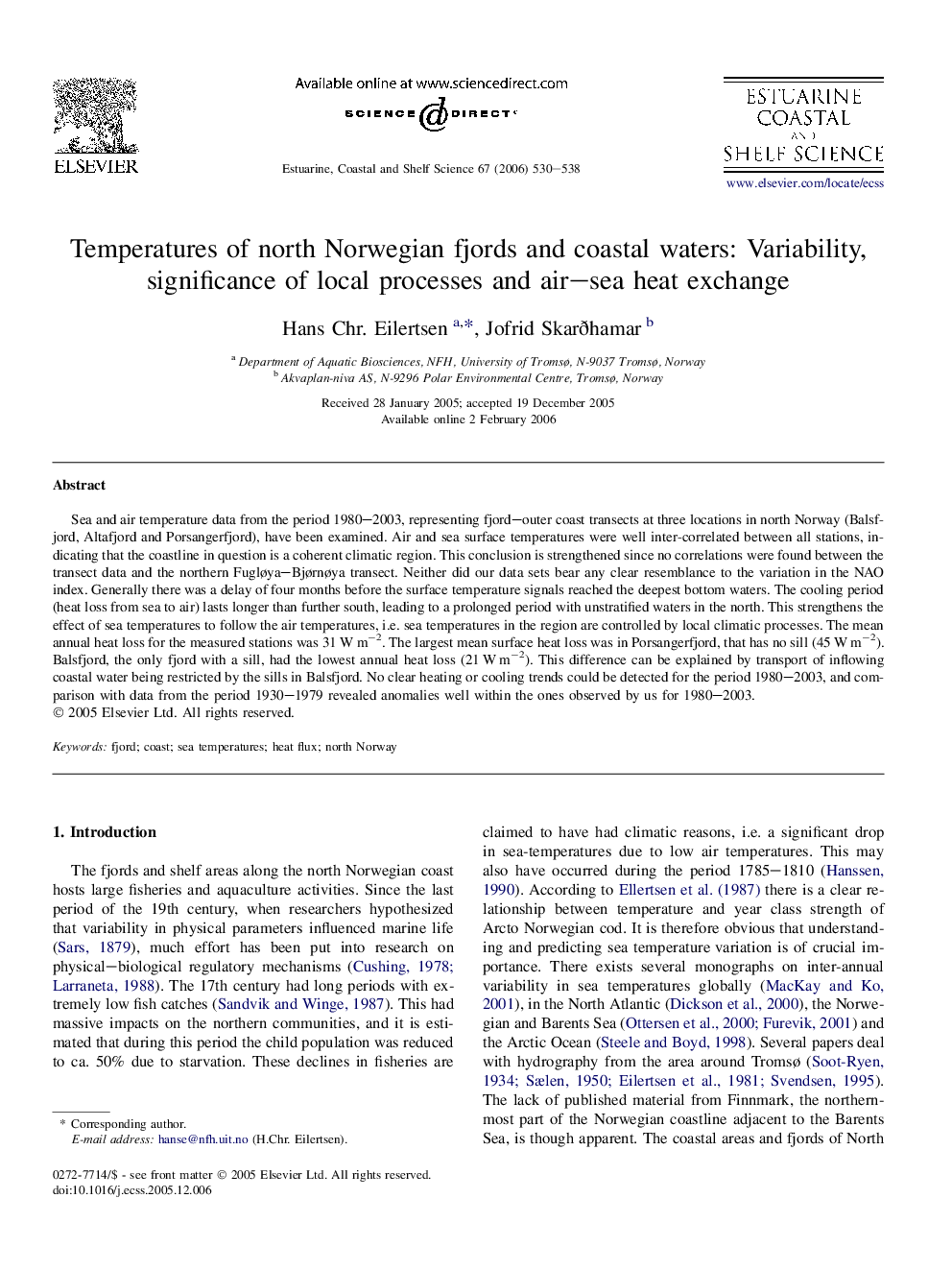| Article ID | Journal | Published Year | Pages | File Type |
|---|---|---|---|---|
| 4542407 | Estuarine, Coastal and Shelf Science | 2006 | 9 Pages |
Sea and air temperature data from the period 1980–2003, representing fjord–outer coast transects at three locations in north Norway (Balsfjord, Altafjord and Porsangerfjord), have been examined. Air and sea surface temperatures were well inter-correlated between all stations, indicating that the coastline in question is a coherent climatic region. This conclusion is strengthened since no correlations were found between the transect data and the northern Fugløya–Bjørnøya transect. Neither did our data sets bear any clear resemblance to the variation in the NAO index. Generally there was a delay of four months before the surface temperature signals reached the deepest bottom waters. The cooling period (heat loss from sea to air) lasts longer than further south, leading to a prolonged period with unstratified waters in the north. This strengthens the effect of sea temperatures to follow the air temperatures, i.e. sea temperatures in the region are controlled by local climatic processes. The mean annual heat loss for the measured stations was 31 W m−2. The largest mean surface heat loss was in Porsangerfjord, that has no sill (45 W m−2). Balsfjord, the only fjord with a sill, had the lowest annual heat loss (21 W m−2). This difference can be explained by transport of inflowing coastal water being restricted by the sills in Balsfjord. No clear heating or cooling trends could be detected for the period 1980–2003, and comparison with data from the period 1930–1979 revealed anomalies well within the ones observed by us for 1980–2003.
